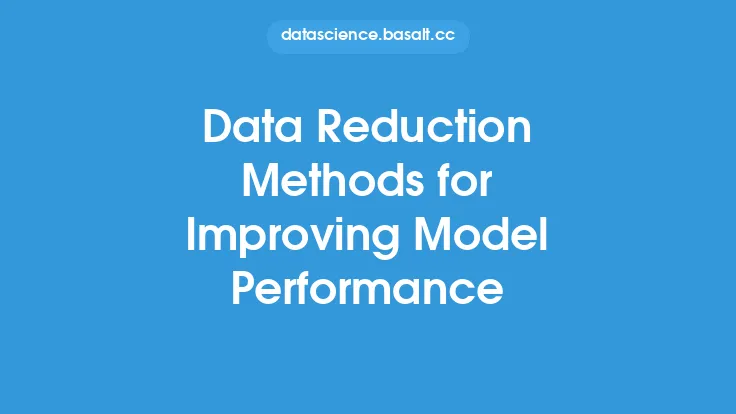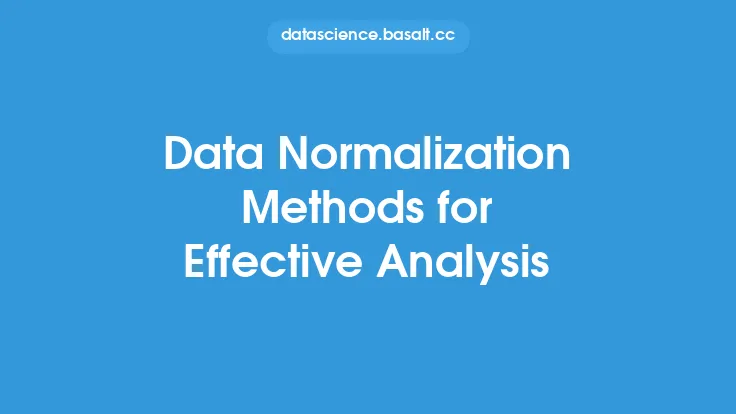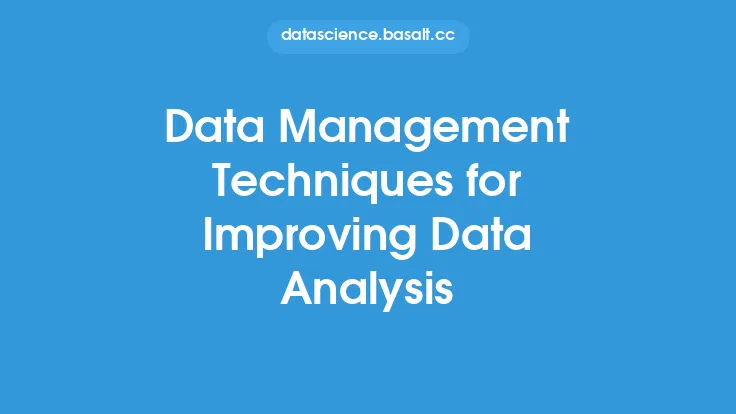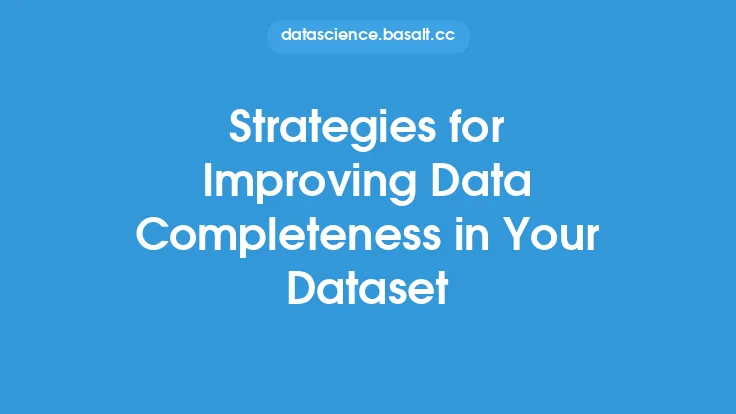Data validation is a critical process in ensuring the reliability and accuracy of data, which is essential for making informed decisions in various fields, including business, healthcare, and science. With the increasing amount of data being generated and collected, it is becoming more challenging to ensure that the data is accurate, complete, and consistent. Therefore, it is essential to implement effective data validation methods to improve data reliability.
Introduction to Data Validation Methods
Data validation methods are techniques used to verify the accuracy and quality of data. These methods can be applied at various stages of the data lifecycle, including data collection, data processing, and data storage. The primary goal of data validation is to ensure that the data is correct, consistent, and complete, which is critical for making informed decisions. There are several data validation methods, including manual validation, automated validation, and statistical validation. Each method has its strengths and weaknesses, and the choice of method depends on the type of data, the complexity of the data, and the resources available.
Types of Data Validation
There are several types of data validation, including format validation, range validation, and cross-validation. Format validation involves checking the format of the data to ensure that it conforms to a specific standard. For example, checking that a date field is in the correct format (e.g., mm/dd/yyyy). Range validation involves checking that the data falls within a specific range. For example, checking that a temperature reading is within a valid range (e.g., -20 to 100 degrees Celsius). Cross-validation involves checking the data against other data to ensure that it is consistent. For example, checking that a customer's address matches the address on file.
Data Validation Techniques
There are several data validation techniques, including data profiling, data quality metrics, and data visualization. Data profiling involves analyzing the data to identify patterns, trends, and anomalies. Data quality metrics involve measuring the quality of the data using metrics such as accuracy, completeness, and consistency. Data visualization involves using visual representations to display the data and identify patterns, trends, and anomalies. These techniques can be used to identify data quality issues and to develop strategies for improving data reliability.
Statistical Methods for Data Validation
Statistical methods can be used to validate data by identifying patterns, trends, and anomalies. These methods include regression analysis, correlation analysis, and hypothesis testing. Regression analysis involves modeling the relationship between variables to identify patterns and trends. Correlation analysis involves measuring the relationship between variables to identify correlations. Hypothesis testing involves testing a hypothesis about the data to determine whether it is true or false. These methods can be used to identify data quality issues and to develop strategies for improving data reliability.
Data Validation and Data Quality Dimensions
Data validation is closely related to data quality dimensions, which include accuracy, completeness, consistency, and timeliness. Accuracy refers to the degree to which the data is correct and free from errors. Completeness refers to the degree to which the data is comprehensive and includes all the necessary information. Consistency refers to the degree to which the data is consistent and follows a specific standard. Timeliness refers to the degree to which the data is up-to-date and relevant. Data validation methods can be used to improve these data quality dimensions and to ensure that the data is reliable and accurate.
Challenges and Limitations of Data Validation
Despite the importance of data validation, there are several challenges and limitations to implementing effective data validation methods. These challenges include the complexity of the data, the lack of resources, and the difficulty of identifying data quality issues. The complexity of the data can make it challenging to develop effective data validation methods, especially when dealing with large datasets. The lack of resources can limit the ability to implement data validation methods, especially in organizations with limited budgets. The difficulty of identifying data quality issues can make it challenging to develop effective data validation methods, especially when dealing with complex data quality issues.
Best Practices for Implementing Data Validation
To implement effective data validation methods, it is essential to follow best practices, including developing a data validation strategy, using a combination of data validation methods, and continuously monitoring and evaluating the data. Developing a data validation strategy involves identifying the data quality issues, developing a plan to address these issues, and implementing the plan. Using a combination of data validation methods involves using multiple methods to validate the data, including manual validation, automated validation, and statistical validation. Continuously monitoring and evaluating the data involves regularly checking the data for quality issues and making adjustments as necessary.
Conclusion
Data validation is a critical process in ensuring the reliability and accuracy of data. Effective data validation methods can improve data quality dimensions, including accuracy, completeness, consistency, and timeliness. There are several data validation methods, including manual validation, automated validation, and statistical validation. Each method has its strengths and weaknesses, and the choice of method depends on the type of data, the complexity of the data, and the resources available. By following best practices and using a combination of data validation methods, organizations can ensure that their data is reliable and accurate, which is essential for making informed decisions.





